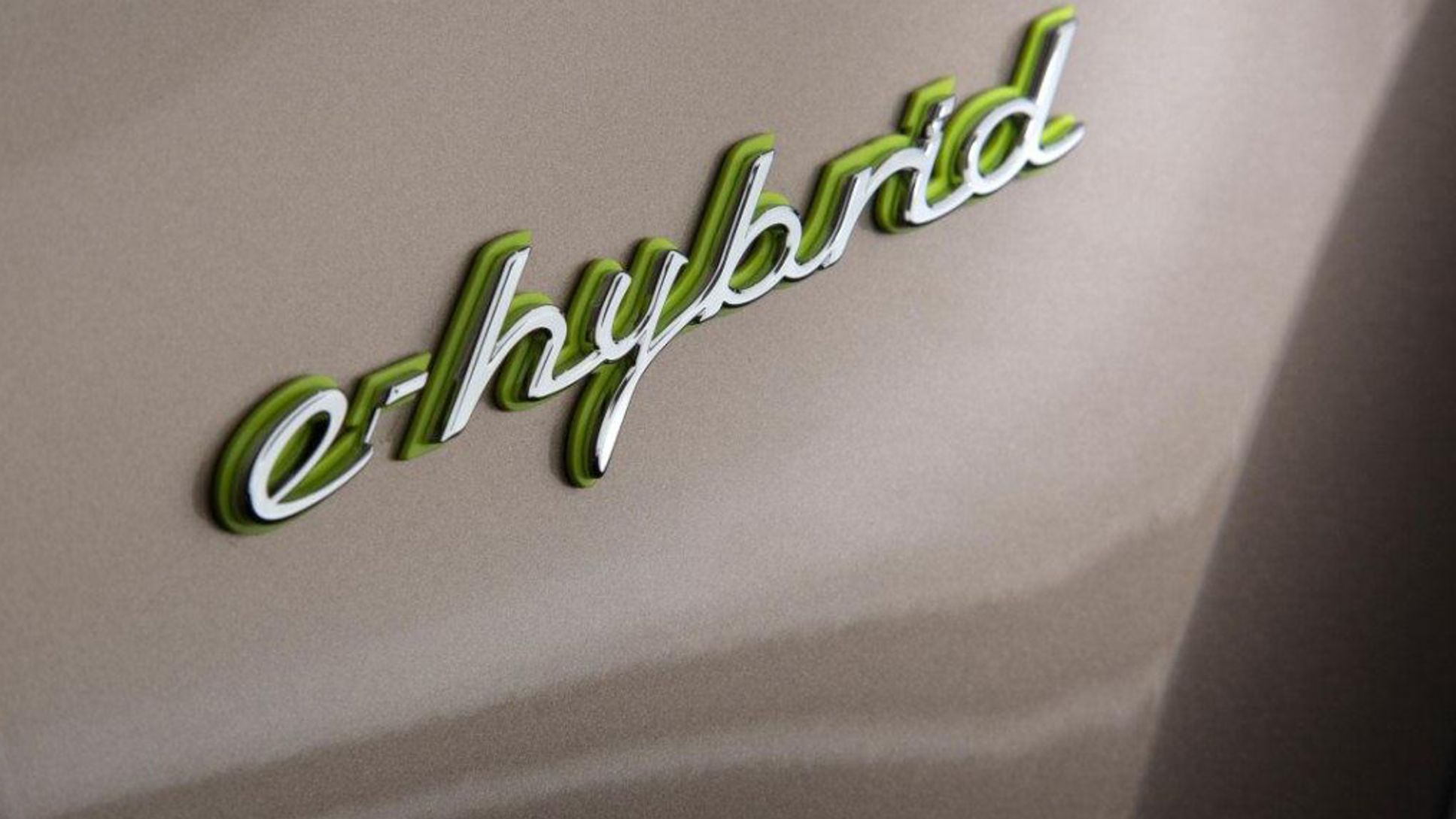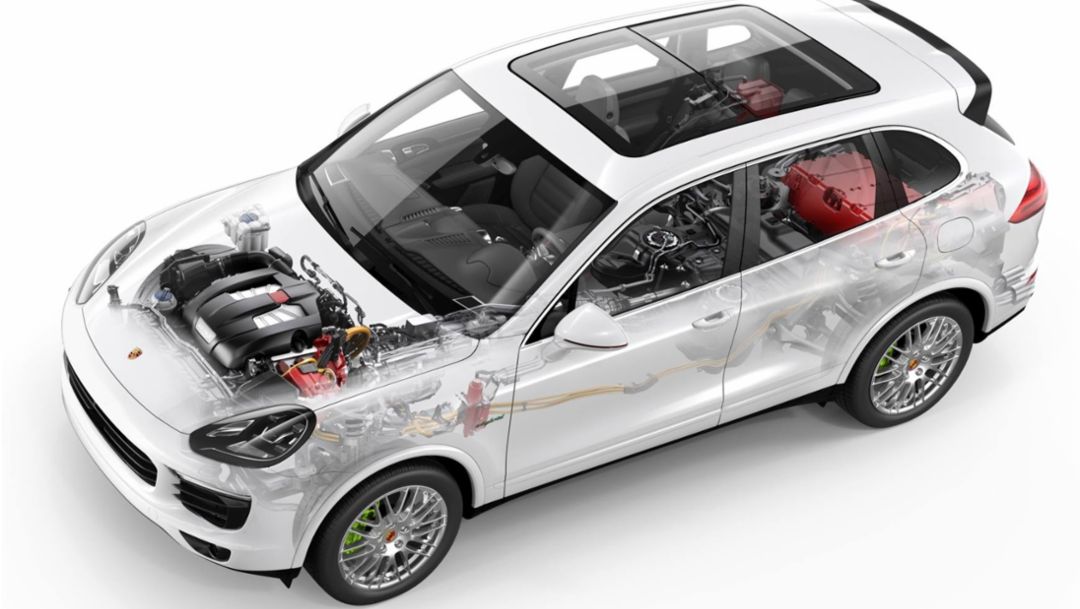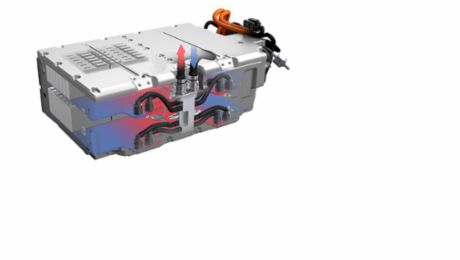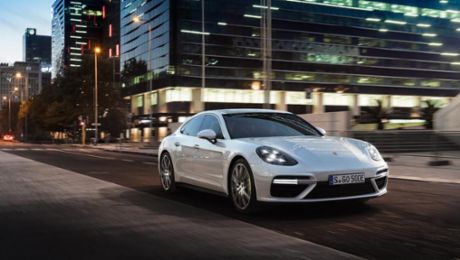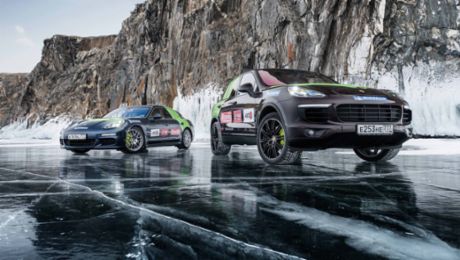The cars are exceptionally fuel-efficient, yet provide the performance typical of a Porsche. The Cayenne S E-Hybrid, for example, consumes just 3.4 litres per 100 kilometres in the New European Driving Cycle (NEDC). That equates to CO₂ emissions of a remarkably low 79 grams per kilometre. The sporty SUV thus achieves the fuel consumption level of a small car – despite a system output of 306 kW (416 hp).
The Panamera S E-Hybrid needs no more than 3.1 litres per 100 kilometres in the NEDC, as does the 918 Spyder – with system output of a whopping 652 kW (887 hp). With the optional 'Weissach package' the super sports car's fuel consumption drops even further, to 3.0 litres per 100 kilometres.
Such efficient drive system concepts are a powerful sales argument and the vehicles are thus being very well received by customers. In the first eight months of the current trading year, for example, the company shipped 1,513 units of the Panamera S E-Hybrid. Related to the whole range that corresponds to a share of sales of nine percent. Porsche is also expecting a high share of sales for the Cayenne S E-Hybrid unveiled at the start of October in Paris.
But how do motoring experts view Porsche's fuel-saving vehicles? And can the outstanding fuel consumption figures actually be achieved in practice? Answers to these questions were provided by a six-day road-test event in Frankfurt am Main, Germany.
Fuel consumption levels achieved during road-tests below official figures
Twelve vehicles, six each of the Cayenne S E-Hybrid and the Panamera S E-Hybrid, were made available to media representatives for testing. They were able to drive these models along three routes in the Rhine-Main region. Between 35 and 56 kilometres in length, they included motorway sections, country roads and city streets and thus reflect differing driving situations. The journalists also had the opportunity to experience the 918 Spyder as a front-seat passenger.
Some of the fuel consumption levels achieved during the road-tests were significantly below the official figures. Some vehicles even achieved average fuel consumption of less than two litres per 100 kilometres. But what do the journalists say? Have a look at the video "Porsche hybrid workshop for journalists" (Downloads on the left) – or at the following media reports:
"Porsche should be applauded for such an impressive piece of engineering, and for those company users that can afford to buy it or lease it, plus private buyers who can exploit the electric-only range on a regular basis, the Cayenne S E-Hybrid makes a lot of sense." autoexpress.co.uk
"The most interesting stuff takes place in town. Turn the key and it's easy to think you've not clicked the ignition all the way, as you're greeted by silence. Shift the eight-speed Tiptronic auto into Drive (still no super-snappy double-clutch PDK on the Cayenne) and the hush continues." topgear.com
"What’s more impressive is how the E-Hybrid stops, or rather how it decelerates. The regenerative braking actually has some modulation in the pedal and doesn’t operate with the on/off action of some other hybrids. It’s a light at the end of a long and dark tunnel of nonlinear hybrid brake feel. It isn’t perfect, and what feel there is remains meager, but it’s an exciting step for enthusiasts and evidence that electrification isn’t the end of all things fun." caranddriver.com
Consumption data
918 Spyder: Combined fuel consumption: 3.1 l/100 km; CO₂ emission: 72 g/km; Electricity consumption 12.7 kWh/100 km
918 Spyder (Weissach package): Combined fuel consumption: 3.0 l/100 km; CO₂ emission: 70 g/km; Electricity consumption: 12.7 kWh/100 km
Cayenne S E-Hybrid: Combined fuel consumption: 3.4 l/100 km; CO₂ emission: 79 g/km; Electricity consumption: 20.8 kWh/100 km
Panamera S E-Hybrid: Combined fuel consumption: 3.1 l/100 km; CO₂ emission: 71 g/km; Electricity consumption: 16.2 kWh/100 km
